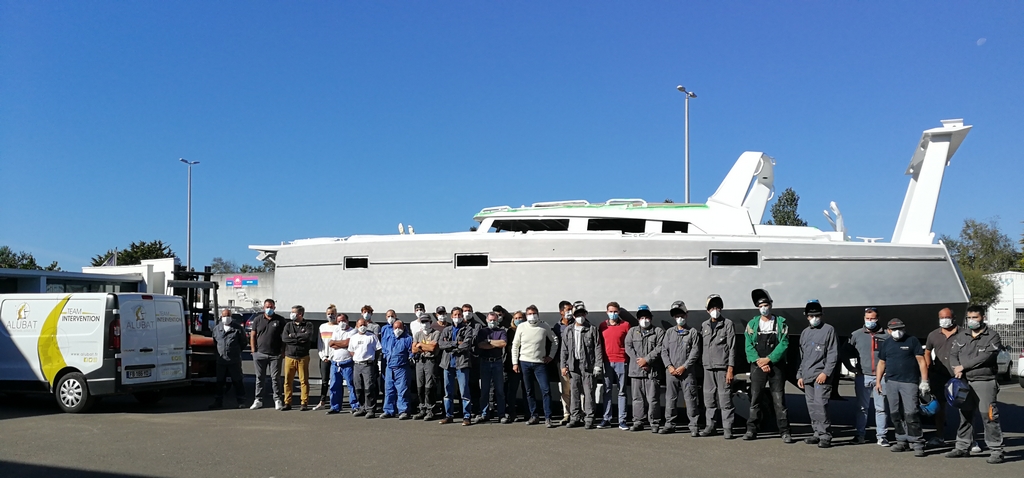Quality Craftsmanship
Quality materials and business expertise

In addition to the materials and components used, the training and experience of our craftsmen are the guarantee of the quality of the boats built in our Shipyard. What’s more, as every stage of the construction is carried out in-house, each element will fit perfectly into your boat.
With a total area of more than 10,000 m², of which 5,500 m² are under cover, ALUBAT CHANTIER NAVAL integrates all the phases of boat construction.
- Your boat will take shape in the skilled hands of our metalworkers who master the shaping and assembly of every element of the boat.
- This will be painted in one of the two paint booths in the workshop. No less than 20 steps have to be carried out in a heated and ventilated environment to apply the 9 coats of paint.
- In the carpentry workshop, our craftsmen install your furniture, which will have been custom-made according to your wishes.
- Finally, all the technical components of your boat (electrics, plumbing, mechanical, hydraulics, optional equipment) will be installed by our technicians.
- The electronics are installed during the manufacturing process, at the yard itself, by teams from our subcontractors (and not afterwards) in order to guarantee optimal integration.
The ALUBAT shipyard perpetuates day after day its passion for tailor-made boats and its love of perfect work by adding new models, new designs and new services.
« Designed for ‘blue water’ travellers but adapted to all »
Our high level of requirement regarding the choice of our suppliers, the equipment for our boats and our working methods with our partners, is vital to reach optimum quality and reliability.
We assist you and advise you on the equipment and options regarding your sailing programme in order to build your customized and adapted boat.
This strategy enables us to monitor the full building process and quality control.
The talent of the best naval architects, such as Philippe Briand, Alain Mortain-Yannis Mavrikios or Marc Lombard, comes in addition to the expertise of ALUBAT’s design department.
Our companions share their daily life with you
World-renowned know-how

Our shipyard based in Les Sables d’Olonne, the Vendée Globe city, whose brands and know-how are internationally recognized, is constantly evolving thanks to a passionate, committed and highly qualified team.
From the most experienced to the youngest with whom the transmission of know-how is underway, they deliver their daily life to you.
ALUBAT shipyard is moving forward, faithful to the same passion that has been motivating our designers and craftsmen of the hundreds of boats that have come out of our workshops and made ALUBAT’s international reputation as great as it is today. More than ever, ALUBAT is carrying on the essential values that made its success by putting the yard and the team at the service of the customers.
We continue to make the most reliable and long-lasting sailing boats that can be, perfectly adapted to your navigation project, may they be simple or more complex, short or long term.
Your ALUBAT boat will be as safe and comfortable in the marina as offshore and as pleasant to steer and live aboard in the tropics as in the frozen north.
